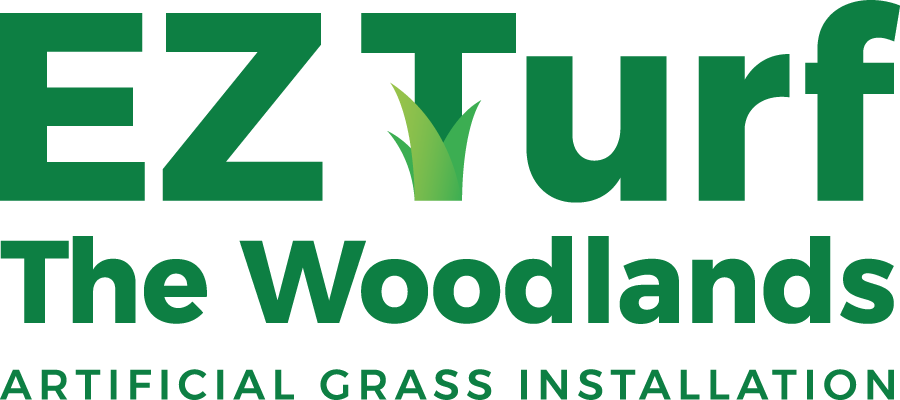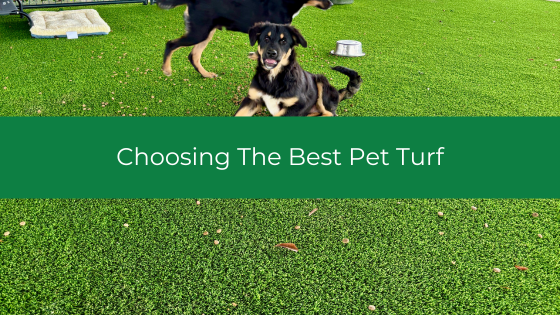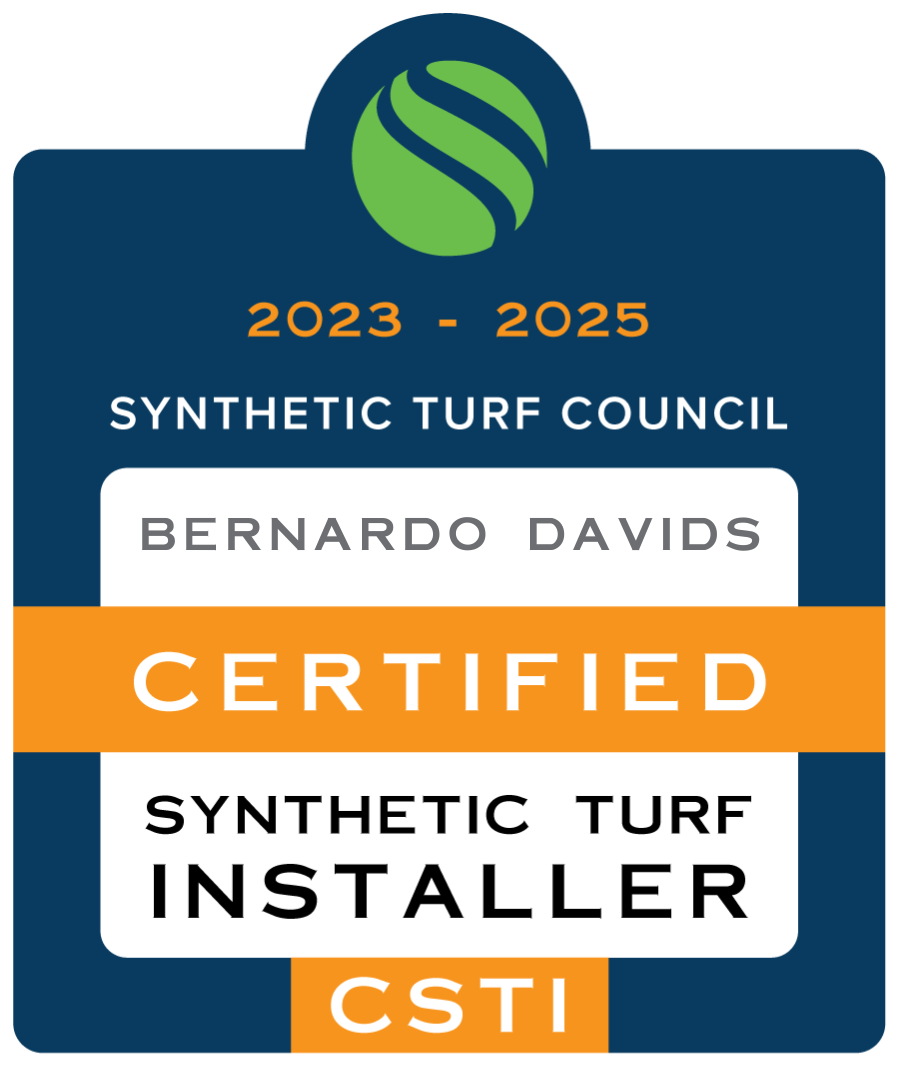When choosing the best pet turf for your property and pups, you’ll need to consider the following:
- The amount of traffic your pet turf will receive (and the size of your dogs)
- Artificial turf blades that bounce back without damage
- The feel and texture of your artificial grass
- How quickly the pet turf is designed to drain
In all, the best pet turf will offer an optimal mix of durability, drainage efficiency, texture and aesthetics. In this guide, we’ll go over what you need to know to choose the pet turf that meets those requirements.
Pet Turf Durability - Density, Pile Height and Face Weight
Durability is your number one priority when choosing a pet turf for your yard. Large dogs can deliver a lot of punishment to your artificial grass, tearing and buckling it if the turf isn’t well constructed or is not professionally installed.
To ensure your pet turf can handle heavy traffic and wear, prioritize face weight and material density. Face weight refers to the amount of material woven into the turf – specifically expressed as ounces per square yard. In general, the higher the face weight, the more durable the turf is. Higher face weight turfs tend to feel and look more luxurious, too.
Pile height is also worth considering and refers to the height of the turf’s blades. While taller grasses have that lush look that homeowners appreciate, shorter grasses are considered a better choice for pet turf as they withstand pet traffic better and are more comfortable for dogs to run and play on.
Pet Turf Performance - Turf Material, Pile Height and Infill
When talking about turf performance, you’re really talking about how it feels and how it bounces when pets or people are using it. For active dogs, the mission is to establish a play surface that absorbs shock and is easy on the pet’s joints. That means high quality turf, so target one with top-end density and face weight and pick a shorter pile height to help ensure those ideal bounce characteristics.
Another important factor in your pet turf’s performance is the infill. Artificial grass is finished with a layer of infill that’s scattered over the turf’s surface and broomed in until it settles between the grass blades. Infill is a necessary step in every pet turf job and guarantees better performance and longevity.
However, there are several types of pet turf infill to choose from, each with their own characteristics and ideal use settings. Silica sand, for example, is an economical infill option that provides support to grass blades, but it has a tendency to clump up and trap moisture left behind by pet waste. As such, silica sand isn’t a great fit for pet turf installations.
Instead, consider an antimicrobial infill option – either sand coated with antimicrobial material or an all-natural option like Zeofill. The latter is a popular pet turf infill because it traps moisture and ammonia-caused odors. This can keep your pet turf looking and smelling fresh even after being exposed to pet waste.
Pet Turf Drainage - Turf Backing Design and Site Preparation
Pet turf must drain efficiently to protect the grass from odors and to keep moisture from building up on the turf’s surface. Rapid drainage is also a must in wet climates like Houston and the surrounding areas, where rain can fall fast and heavy.
To promote maximum drainage, artificial grass can be designed with backing material that allows water to pass through. Hole punch turf backing is one such option and features regularly spaced drainage holes which can drain several feet of water in a single hour. For even faster drainage, consider a turf with a 100 percent permeable backing, as it permits faster and more even drainage across the artificial grass surface.
Pet Turf Aesthetics - Thatch, Color and Turf Density
Function is typically prioritized over form when choosing the best pet turf for a property. But aesthetics also play an important role, and what’s the point of investing in artificial grass if it’s not going to look nice?
To maximize the look of your pet turf, consider its density (again a proxy for overall quality) and its color – which should be imparted into the grass using UV-resistant dyes. Modern artificial grasses are much more convincing than the neon green Astroturf of decades past – featuring natural-like, subtle shades of color that can fool even the most discerning eye.
Another important consideration is to choose a pet turf that includes a thatch layer. Thatch is the dead layer of grass blades that sit at the base of the still living grass. Color-wise, thatch is a combination of light browns and yellows, which contrasts nicely with the turf’s richer greens. It may cost a bit more to install a pet turf with thatch, but it makes a big aesthetic difference.
Consult with Artificial Grass Experts to Choose the Best Pet Turf for Your Property
With a little experience, any knowledgeable consumer can tell the difference between a high quality and lower quality pet turf. The question is whether you have the time to sort through all the available options and identify the absolute best turf for your application?
Many property owners don’t, which leads them to consider partnering with an experienced pet turf installer to assist with the entire process. Expert artificial grass companies have access to the best pet turfs on the market and can source them from reputable suppliers. An expert turf team will also provide on-point site preparation and turf installation services, ensuring your pet turf provides excellent value and an extended lifespan.
- Choosing The Best Pet Turf - April 16, 2025
- The Benefits of Having Artificial Turf in Houston - April 2, 2025
- Best Types of Artificial Turf for Residential Lawns - February 28, 2025


